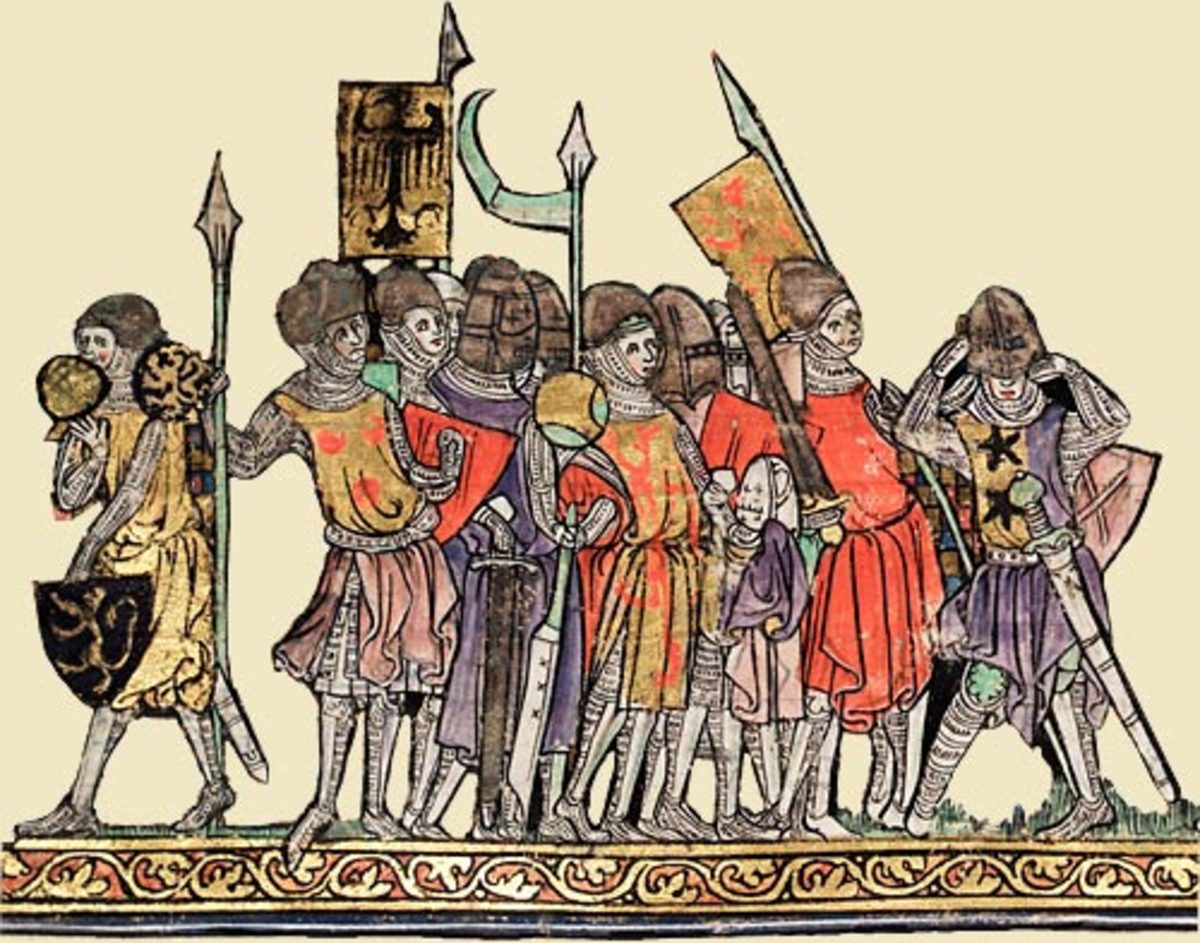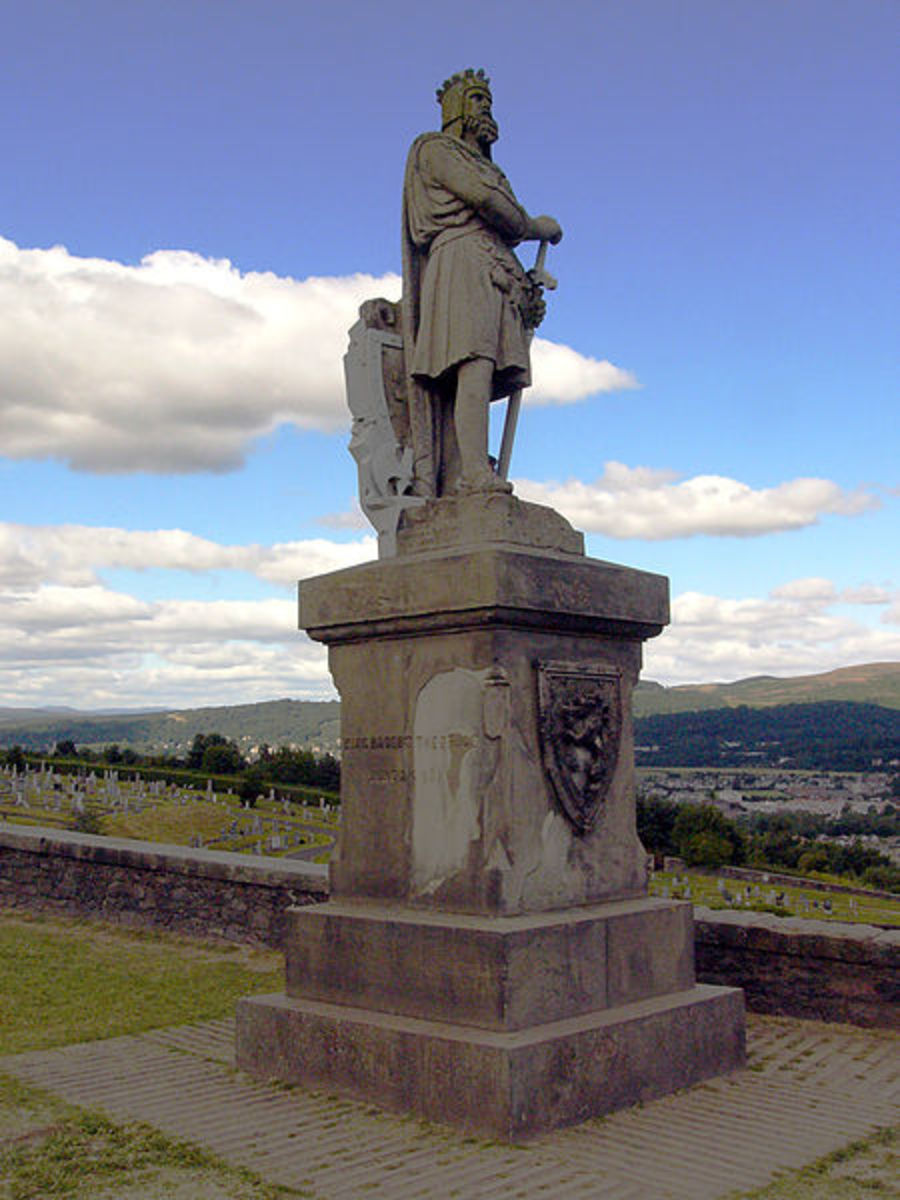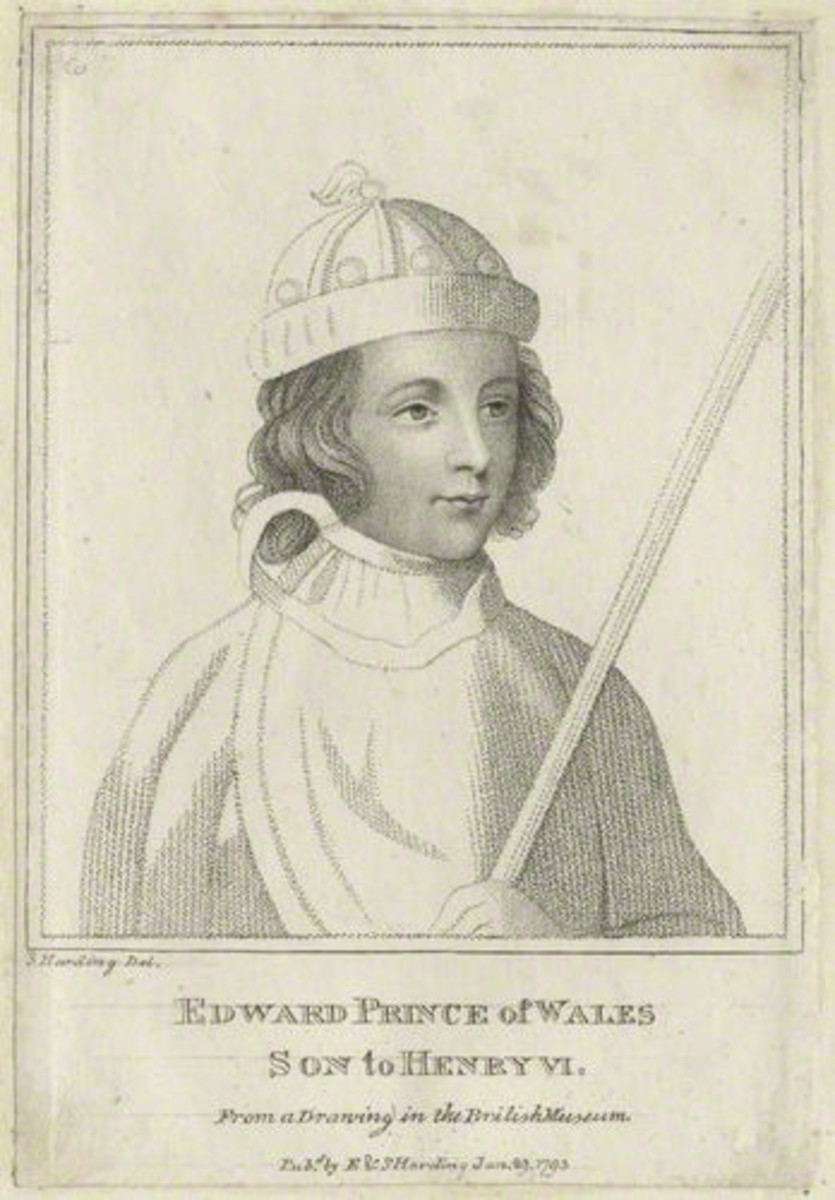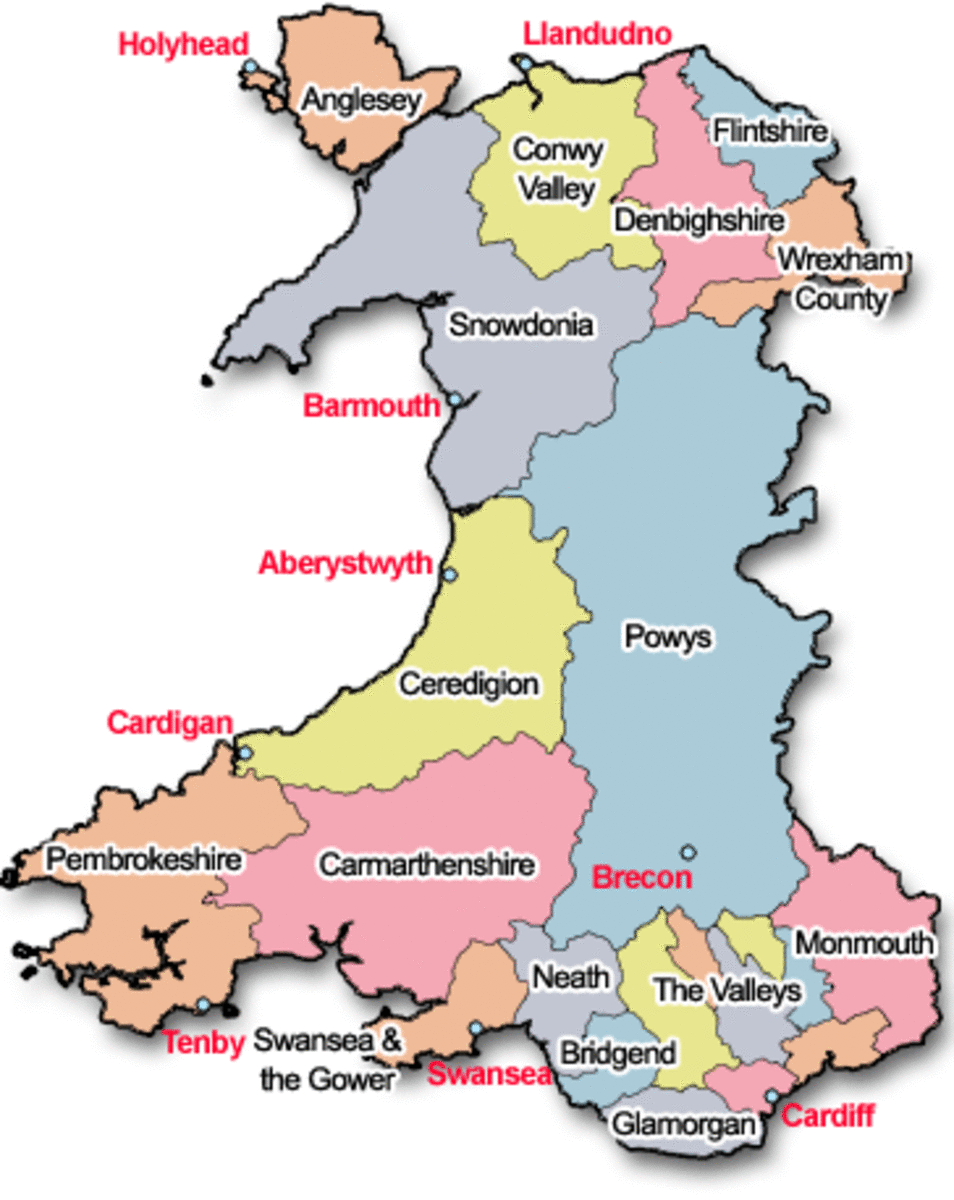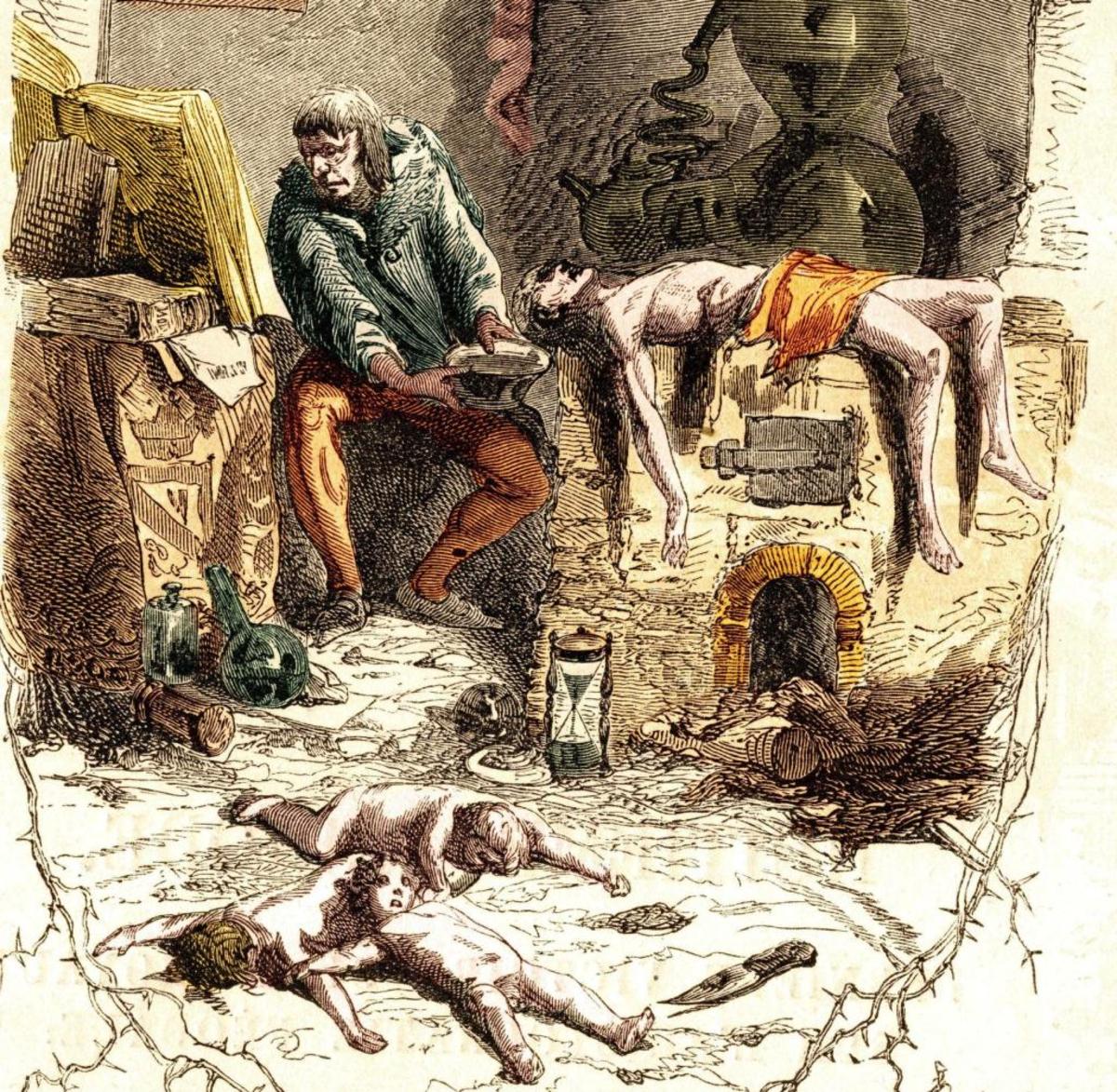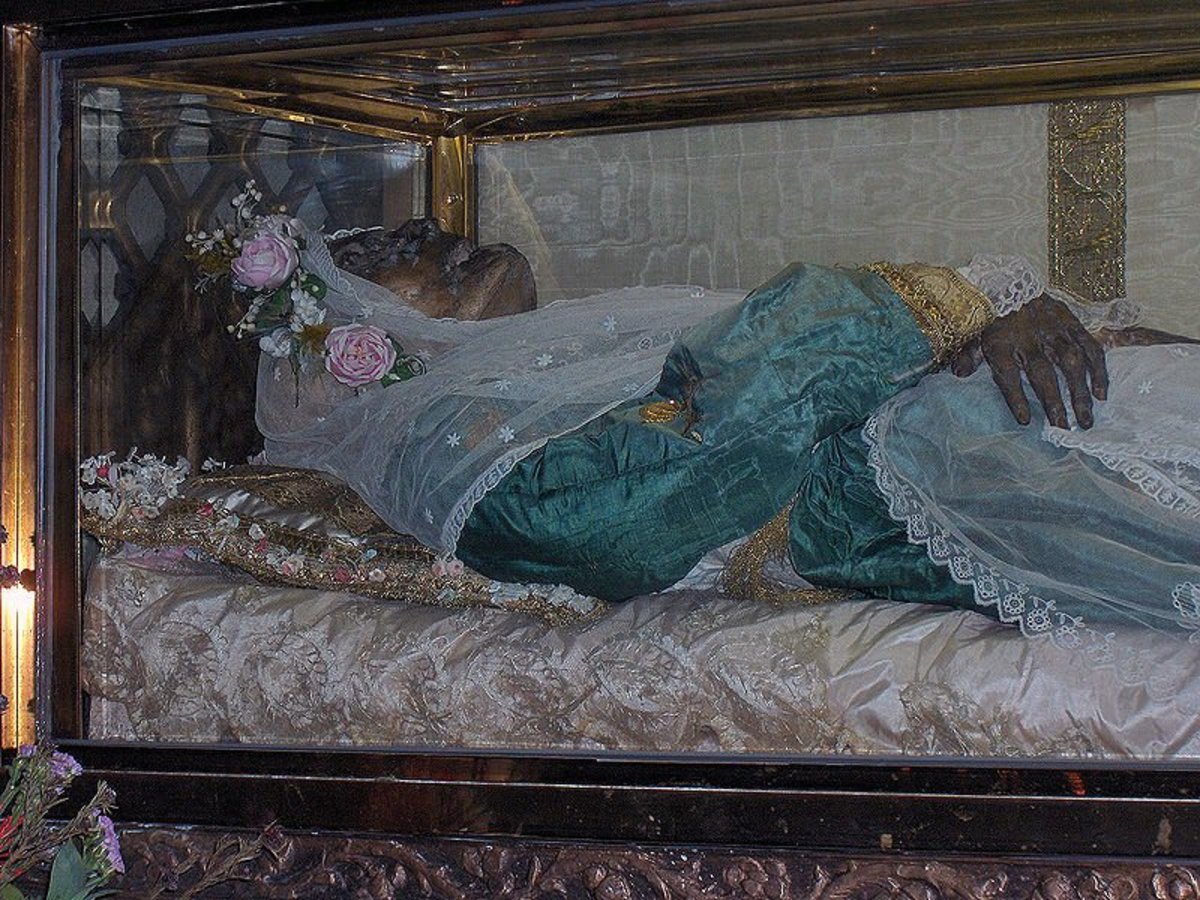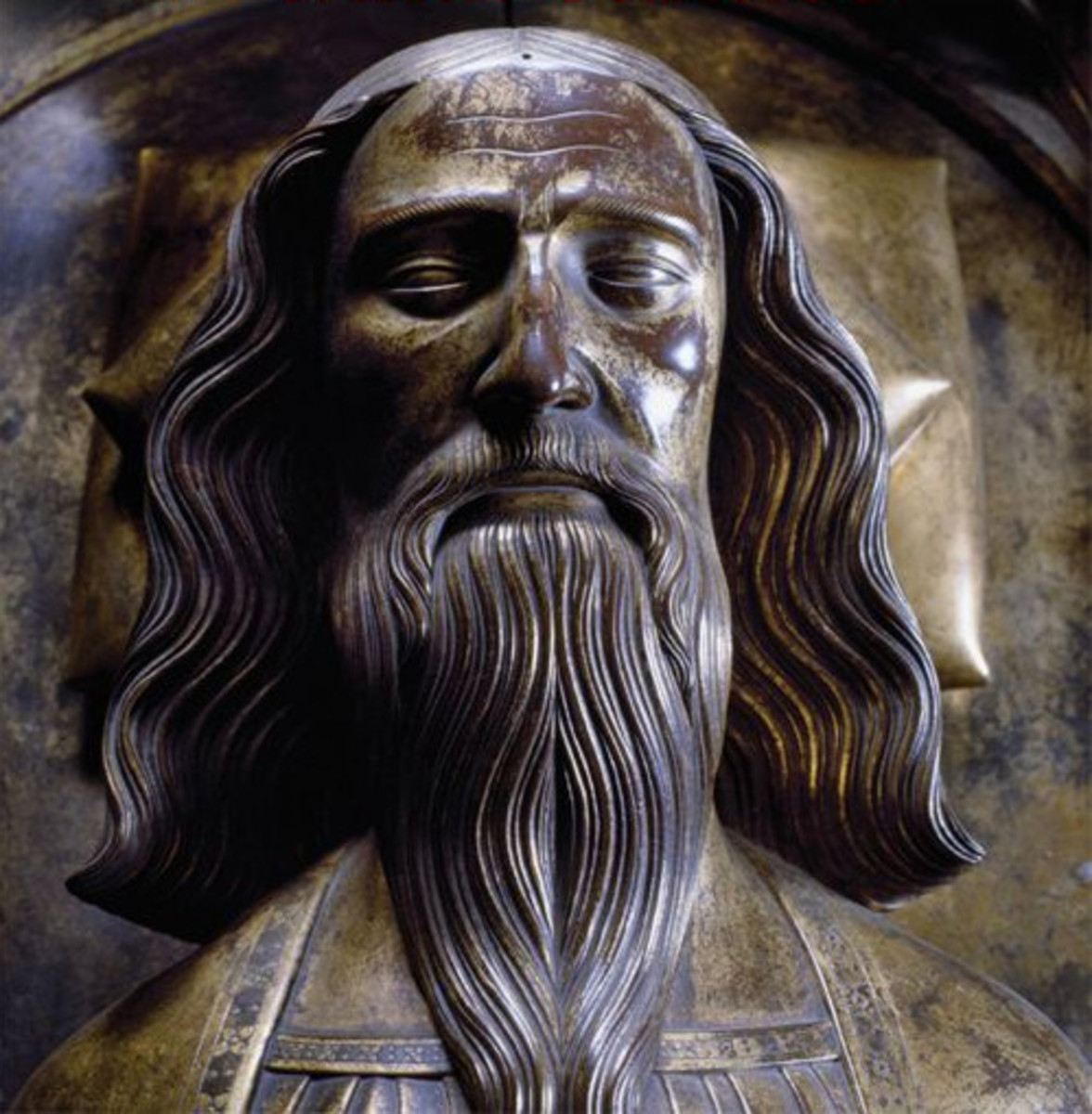England Invaded (2): The French Team
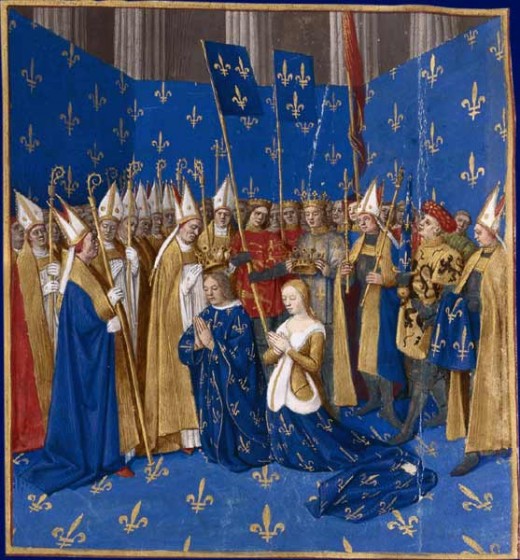
By Nils Visser
Let’s recap. We started out with a history lesson concerning King John which was subsequently kidnapped by ambitious filmmakers seeking sensational pseudo-historical blood, sweat and tears. Moreover, it was an open ended lesson, as we discovered that the ultimate baddie was, in actual fact, going to be leader of the goodies.
All in all, things are going rather well I’d say. Time for the next instalment which will continue to focus on the First Baron’s War, a story full of archetypal heroes and villains, high drama and poignant tragedy.
Let’s reiterate the nastier aspects of John’s character: He betrayed his father Henry and brother Richard; imprisoned his young cousin Eleanor; castrated and blinded his young cousin Arthur; and discarded his first wife in favour of twelve-year old Isabella of Angoulême whom he more or less kidnapped from her family and fiancée, and bedded with high frequency, if court gossip is to be believed.
He was easily offended, harboured grudges and exacted damaging if not fatal payment for such debts. He projected his own untrustworthiness on those around him, and therefore trusted no one. As a leader he failed his people. Aye, he was burdened by a crushing debt as his brother Richard’s crusades and ransom had cost the country dearly, but he continued to tax them in order to finance a war to retain the Angevin possessions in France, a war which he often prolonged because of his own actions which alienated friends and allies, and a war which he eventually lost. Not only did he lose the French possessions, he could also be held responsible for an army of at least 10,000 Frenchmen wandering about on English soil for a while, causing havoc and mayhem, as well as forcing his subjects to make some difficult decisions about loyalty.
Having spent quite a lot of time analysing the chief villain King John, it’s his most clearly defined opponent who ought to lead the rest of the cast: Namely Prince Louis of France.
It’s this assumption that is quite a good demonstration of the tendency of the human spirit to hijack historical investigation and move it in directions dictated by emotion. We already noted this in the last chapter, where contextualization of John’s legacy was accepted, hesitantly but acknowledged none-the-less, and then blatantly discarded when things got juicy between the bed sheets and the theatrical lobby stood to gain by maximum vilification (the astute reader no doubt noting that I change my purposes more often than a baby who is spoon-fed Chicken Vindaloo four times a day requires a diaper change).
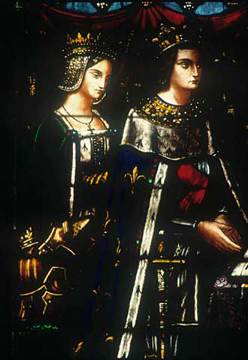
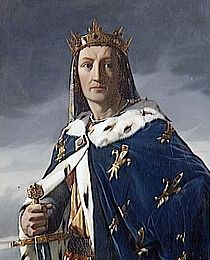
LOUIS THE LION
Humans like symmetry and humans seek balance. Therefore, it would have been oh so nice to present Prince Louis as John’s opposite in character and nobility. If a bad guy can lead the good guys, why not have a good guy lead the bad guys? Such a solution would suggest a depth which isn’t really there but which wouldn’t require much investment to maintain.
Initial findings bode well. We learn that Louis, nicknamed the Lion, “was short, thin, pale-faced, with studious tastes, cold and placid temper, sober and chaste in his life. He left the reputation of a saint, but was also a warrior prince.” Not quite pleasant company in the pub perhaps, as he seems somewhat remote and analytic, but an almost perfect contrast to John’s unstable emotive state and primary reactions. Moreover, Louis was relatively young, only eleven when John became King of England and twenty-eight when he crossed the channel to lay claim to the English crown, whereas John was almost twice his age. This is symbolic of course, the fresh hope of relative youth replacing the degenerate corruption of old age. Historians will scoff but our cinema audience, generally the younger generation, will love every minute of it.
Furthermore, we learn that he didn’t invade England so much as respond to an invitation, making him less of an aggressor and more of a friendly helpful neighbour. In 1215 Louis was visited by a number of English barons who asked him to "pluck them out of the hand of this tyrant". Stimulated by his father, the same Philip Augustus who had been the nemesis of Richard I in the Holy Land and Normandy, Louis followed the almost 10,000 French troops who had been sent across the channel in response to the baronial invitation.
Anyone who has had a critical demanding father with high expectations can sympathise with Louis as Philip Augustus kept a sharp eye on his son’s progress in England and issued harsh comments and criticism when the campaign in England started running into trouble. Even worse, when things started going seriously wrong Philip Augustus distanced himself from his son’s failures, claiming he had advised against the expedition from the start, and refusing to meet his son’s requests for further monies and reinforcements.
None-the-less Louis persisted, he was clearly not one to easily discard projects once he had taken up a cause, and this strengthens respect for his character. Curiously enough, he has in common with John a child-bride, one which both wedded in the year 1200. When Louis married Blanche of Castille she was only twelve, just like John’s bride Isabella of Angoulême. However, on the day of his wedding Louis himself was only twelve as well, contrary to John who was in his early thirties. Moreover, it’s recorded the wedding wasn’t consummated until a few years later, Blanche was seventeen when the couple’s first child was born in 1205.
So far so good, Prince Louis can be the Yin to King John’s Yang. An essentially decent chap whom fate and father decreed should venture on an adventure in which he tried to help out a neighbour but was seen as an invader, an unwilling leader of the bad guys. Or can he?
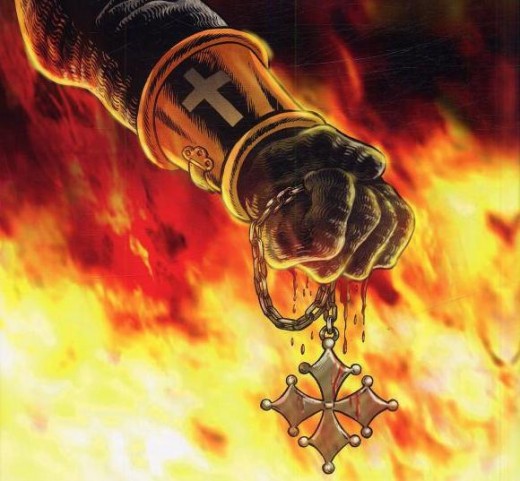
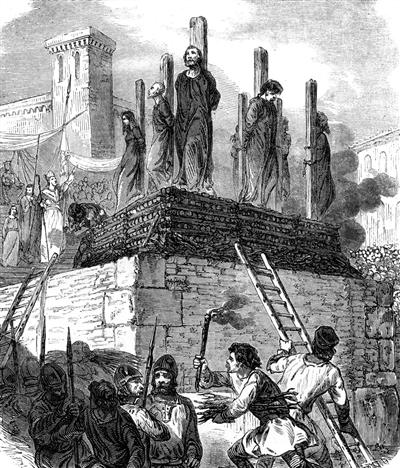
ARNAUD AMAURY
Louis’ career reveals a less wholesome side to the warrior prince Louis the Lion. In 1215, the same year he received the English baronial delegation, he had aided Simon de Montfort in the war against the Albigenses (Cathars) and after his return to France from the English adventure he joined the Albigensian Crusade once more. He brought south an army of “20 bishops, 30 counts, 600 knights and 10,000 foot soldiers” to reinforce the papal delegate Arnaud Amaury.
From a modern perspective Arnaud Amaury is nothing but a bloodthirsty monster. He is generally held to be responsible for the mass executions at Casseneuil, where "many heretics and many fair women" were burnt alive, and at Minerve where 140 Cathars perished in the flames of execution pyres. Worse was to come when the city of Béziers was besieged and taken by the crusader army. According to William of Tudela “they killed everyone who fled into the church; no cross or altar or crucifix could save them. And these raving beggarly lads, they killed the clergy too, and the women and children. I doubt if one person came out alive … such a slaughter has not been known or consented to, I think, since the time of the Saracens.”
Arnaud-Amaury himself wrote to the Pope that “neither age, nor sex, nor status had been spared” and reported sixty-thousand deaths (although the city probably had no more than 14,000 inhabitants). Purportedly Arnaud-Amaury had been asked, even as the besiegers were starting to run amok in the city, how they attackers should tell the difference between the Catholic and the Cathar inhabitants.
"Caedite eos. Novit enim Dominus qui sunt Eius." was his supposed answer: “Kill them all, God will recognize his own.” It’s unlikely that this was actually said, but the words were written down within ten years of the event (contemporary descriptions are rare, so ten years, by very definition, is close) and the language and imagery does fit the content of the boastful letter Arnaud-Amaury wrote to the Pope.
LOUIS REDUX
Such was the character of the man whom Prince Louis came to aid in the siege of the city of Marmande in 1219. When the leaders of the garrison in Marmande realized that theirs was a lost cause, they ordered the citizens of Marmande to cease their resistance and went to Louis’ camp in order discuss conditions of surrender. Even while these negotiations were being conducted the Crusaders attacked and swarmed into the city. Louis and Arnaud-Amaury allowed the garrison leaders to live, and ordered the execution of everybody else. Some 5,000 to 7,000 men, women and children were massacred. Contemporaries of Louis would have considered this a necessity, heretics needed to be rooted out and destroyed, it even strengthened the saintly reputation mentioned earlier. Nowadays, of course, such an action receives almost universal condemnation and is called genocide.
As King Louis VIII of France, Louis would participate in the closing phases of the Albigensian Crusade as well, dying during the campaign in 1226, but securing Languedoc for France in the process.
For our dramatic interpretation of 1216-1217, it really is much nicer to keep John and Louis as opposites, so we’ll conveniently ignore the brutal mass murder at Marmande, after all, the victims were only heretics.
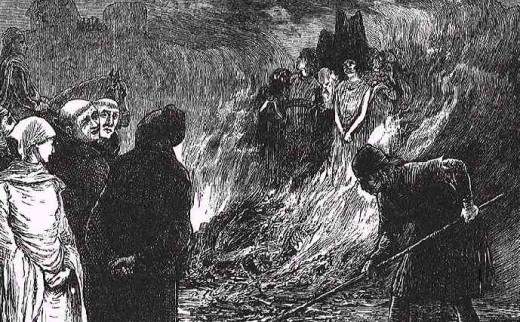
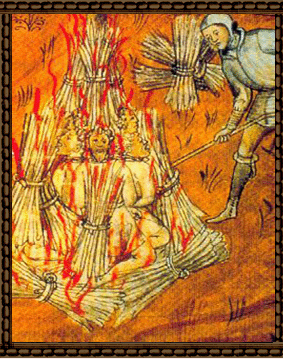
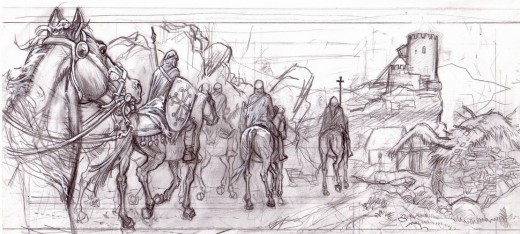
BLANCHE OF CASTILLE
When the English barons offered Louis the throne, it was based on his marriage with Blanche, daughter of Alfonso VIII, the king of Castile, and Eleanor of England, daughter of Henry II and Eleanor of Aquitaine, and therefore niece of King John I.
Blanche wasn’t a damsel-in-distress type of Medieval woman. When Philip Augustus refused further aid to Louis, it was Blanche who went to Calais and organized two fleets with reinforcements for Louis’ undertaking in England, dealing with the likes of Eustace the Black Monk in order to aid her hubby, purportedly she pawned her jewels to contribute to the costs.
When Louis died in 1226 his heir Louis IX was only twelve years old and his hold on France was shaky, and it was Blanche who stepped in to secure his reign by launching a complicated but successful diplomatic campaign and raising an army to intimidate potential southern rebels. She also ended the Albigensian Crusade by diplomatic means in 1229. When Brittany rebelled in 1230 she raised an army and ordered a surprise winter attack. She rode with that particular army and personally helped to collect firewood for the cold winter camps. When anti-Semitism reared its ugly head in 1239 she insisted on fair judicial proceedings and even defied her own son, King Louis IX, by placing the Jews of Paris and their belongings under her personal protection.
In short, a strong woman who, throughout her life, was able to hold her own in a man’s world, successful as a diplomat and as a military leader. For our dramatic purposes this is quite important, if we look at the Maid Marians in the 2010 Robin Hood movie and the recent BBC series we see that strong independent women, for some obscure reason that escapes my comprehension, appeal to the female audience.
THE ARCUBALISTERS OF ROCHESTER CASTLE
Not part of the French army, but in the opening phases of the First Baron’s Rebellion, the defenders of Rochester Castle put up a heroic defence against King John’s siege. As opponents of England’s king, they are listed amongst the baddies. As opponents of a tyrant their brave defiance deserves praise and admiration. Such is the Fog of War, not just literally a case of not quite knowing what the enemy is up to, but also figuratively not always being quite sure who is friend and who is foe.
It is recorded that during the initial stages of the siege, which included assaults on the castle walls, the crossbowmen, or arcubalisters (i.e. those who shoot an arcuballista, an early name for the crossbow), caused King John’s army much distress. According to some sources King John himself was at one point in mortal danger. He had come forward to supervise the attacks and came into crossbow range. Apparently one of the defending crossbowmen had his crossbow loaded and aimed at the king when William de Albini of Belvoir, leader of the defenders, intervened, saying “It is not for us to kill the Lord’s anointed.”
John had one of the towers of the keep mined and the tower collapsed offering his troops access into the castle. Still the defenders resisted, occupying a number of rooms within the keep, subsisting on water and horseflesh. Some defenders were either captured or ejected from the makeshift stronghold because they were too weak to fight, and John had their hands and feet cut off as punishment.
When the defenders surrendered at last John wanted to kill all of them but was persuaded to spare the nobles. In the end he settled for the hanging of the crossbowmen, as retribution for the royal losses they had caused. Accounts differ whether or not all the crossbowmen were hanged, or a number of them, or just a single one who had been in John’s personal service and whose presence amongst the baronial forces was a matter of personal betrayal. Either way, the arcubalisters of Rochester Castle paid a price for their defiance.
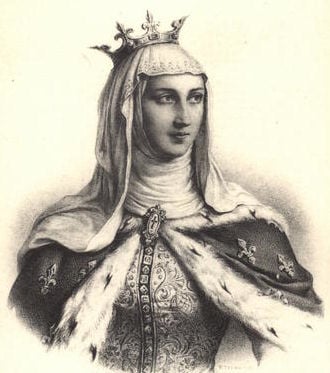
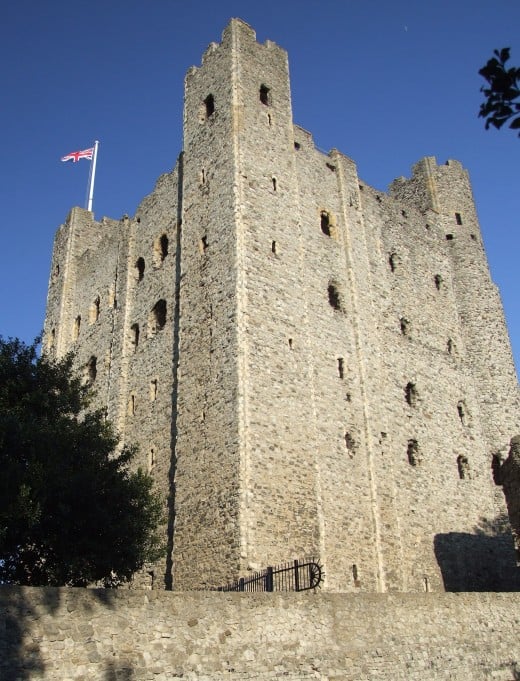
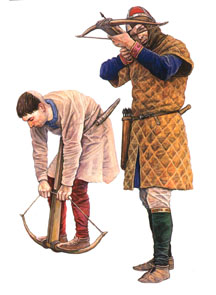
ERNAUT THE CROSSBOW SHARPSHOOTER
Of whom we know little, except that he served as a crossbowman in the army that Prince Louis sent to besiege Dover Castle. During the initial stages of the siege, the French army had not yet surrounded the castle proper and the Dover Castle garrison would venture outside the castle gate to parade in full armour (presumably the castellan was bored). French crossbowmen would approach as closely as they dared in order to shoot bolts at the parading garrison, interesting because it reveals that crossbowmen could do more than just form a battle line, here we see them in a skirmishing role. In one such an encounter, Ernaut, one of the French best crossbowmen, ventured too close to the parade and was captured.
HUART PAON
Of whom we know little except that he served the Lord of Bethune in Northern France and was referred to as a “horse soldier”, presumably a man-at-arms. In the French assault on Dover Castle’s barbican by the northern gatehouse, Huart Paon was the first French soldier to enter the barbican.
THOMAS DU PERCHE
The Comte Du Perche is the archetypal young aristocrat whose horse probably had more brains than its master. Second cousin to Prince Louis, he is put in charge of the army sent north where it ends up taking the city of Lincoln and besieging the loyalist forces in the castle. When William Marshal leads a relief force to Lincoln Thomas Du Perche ignores the advice given to him by veteran warriors, instead falling for a ruse Marshall devised to trick the French. As a result the Battle of Lincoln Fair is won by the loyalists, the French suffer heavy casualties, many inflicted by mercenary crossbowmen, and suffer even more as they flee southwards through hostile territory where the local populace seek revenge for the havoc caused by the armies marching to and fro for the duration of the First Baron’s War. Thomas Du Perche dies at Lincoln, with him die Louis’ hopes for success in his English campaign.
EUSTACE THE MONK
Eustace was born in 1170 near Boulogne in Northern France. He spent the first thirty years or so of his life in a monastery. There he acquired a reputation for gambling and the use of foul language, as well as the nickname The Black Monk. When his father was murdered Eustace left the monastery to pursue the killer. A duel was fought (by substitutes) and Eustace lost. In 1204 he entered the service of Renaud, Comte du Boulogne, but was expelled from this service due to shady business regarding the count’s possessions. Eustace crossed the channel in 1205 and met with King John. From that meeting he emerged as the commander of a small fleet sent to attack and pillage coastal towns in Normandy and assist in the expulsion of the French from the Channel Islands. There he set up a base on the island of Sark and became a pirate, preying on the channel shipping trade. In 1209 he served as King John’s representative in Boulogne, but in 1214 he loses English favour and is expelled from the Channel Islands. He switched allegiance to France, and when Prince Louis crossed the channel in 1216, the would be King of England is a passenger on Eustace’s flagship. Eustace is captured and executed during the (sea) Battle of Sandwich in 1217.
Many things were said, sung and written about this character. No doubt a lot was fanciful, but on the whole it is agreed that he was a very unsavoury character, a natural liar and prone to trickery. The latter includes relatively harmless pranks such as putting tar in cakes to much more serious allegations that he partook in Black Magic. Many of his disguised involved cross-dressing, he was fond of breaking taboos and sexually humiliating prisoners.
All in all, from a cinematic viewpoint, an almost perfect villainous character. There needs to be no ambiguity here with regards to the question whether or not Eustace was friend or foe, he can be portrayed as pure and sinister evil, a worthy addition to this list of bad guys.
Moreover, as we will find out, just like King John and Prince Louis form almost perfect opposites, so will Eustace the Black Monk, and the archetypal hero who will round off the list of good guys, coming to the next episode of England Invaded: The Anglo-Norman Team.
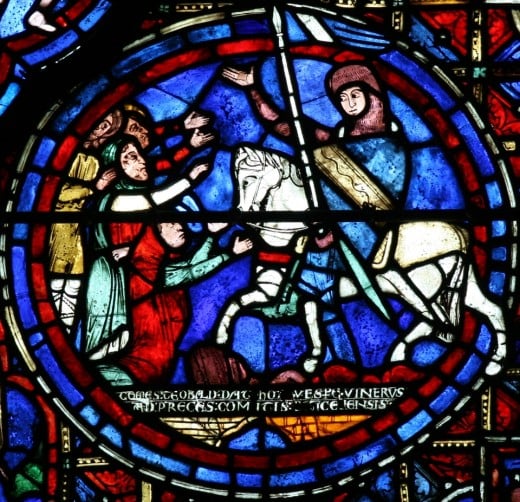

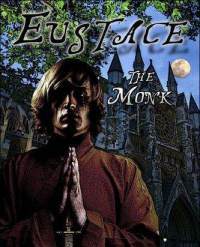
Your View
My favourite "heroic" villain is:
Your view
My favourite creepy evil sinister villain is:
SERIES CONTINUED HERE
- England Invaded (3): The Anglo-Norman Team
An exploration of tne First Baron's War. This episode focuses on the Anglo-Norman side, consisting of some baddies and some classic heroes, amongst whom we find the enigmatic Willikin of the Weald.

